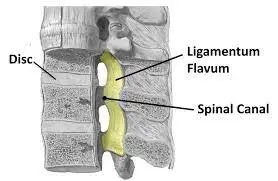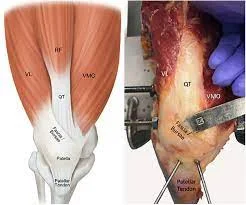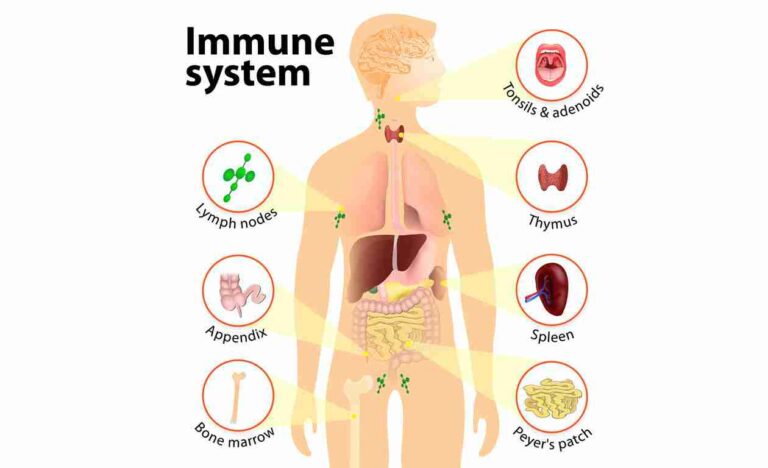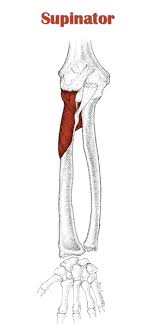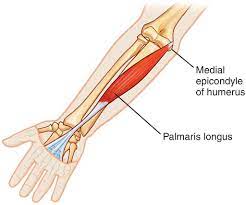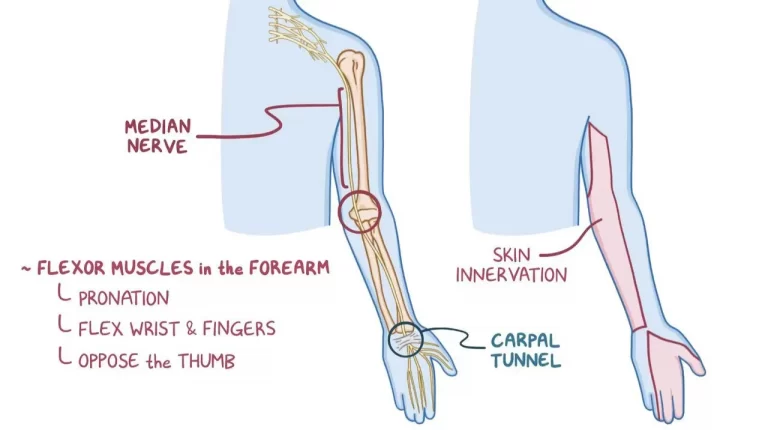Ligamentum Flavum
Table of Contents
Introduction
The Ligamentum Flavum is a strong, elastic ligament that runs along the back of the spinal column. It connects the vertebrae and helps to provide stability to the spine. The ligament is made up of yellow elastic fibers and collagen fibers, giving it both strength and flexibility.
It is located between the laminae of adjacent vertebrae and plays an important role in maintaining the normal curvature of the spine. Injuries to the Ligamentum Flavum can cause pain, stiffness, and other symptoms that can affect a person’s quality of life. Treatment may include rest, physical therapy, pain medication, and in severe cases, surgery. Maintaining good posture and avoiding activities that put excessive strain on the spine can help reduce the risk of injury to the Ligamentum Flavum.
Structure of the Ligamentum Flavum
The Ligamentum Flavum is a strong, elastic ligament that runs along the back of the spinal column. It is composed of two layers of elastic fibers and collagen fibers, which give it both strength and flexibility. The outer layer of the ligament is made up of yellow elastic fibers, while the inner layer is composed of collagen fibers.
The Ligamentum Flavum is located between the laminae of adjacent vertebrae, which are the bony structures that form the back of the spinal column. It connects the vertebrae and helps to provide stability to the spine. The ligament also plays an important role in maintaining the normal curvature of the spine.
The Ligamentum Flavum has a unique structure that allows it to withstand the forces that are placed on the spine. The elastic fibers in the ligament are able to stretch and recoil, which helps to absorb shock and prevent damage to the spine. The collagen fibers provide additional strength and support to the ligament.
Maintaining good posture and avoiding activities that put excessive strain on the spine can help reduce the risk of injury to the Ligamentum Flavum. Regular exercise and stretching can also help to keep the ligament and surrounding structures healthy and strong.
Attachment of the Ligamentum Flavum
The Ligamentum Flavum attaches to the laminae of adjacent vertebrae, which are the bony structures that form the back of the spinal column. It runs along the entire length of the spine, from the base of the skull down to the sacrum.
The ligament is attached to the laminae through a series of fibers that extend from each layer of the ligament to the bone. The outer layer of the ligament, which is made up of yellow elastic fibers, attaches to the laminae through a series of short, strong fibers. These fibers are arranged in a crisscross pattern, which helps to distribute the load evenly across the ligament.
The inner layer of the ligament, which is composed of collagen fibers, attaches to the laminae through a series of longer fibers. These fibers are oriented in a more parallel fashion and are less elastic than the fibers in the outer layer. This gives the ligament additional strength and support.
The attachment of the Ligamentum Flavum to the laminae is important for maintaining stability in the spine. When the spine is subjected to forces, such as those caused by bending or twisting, the ligament helps to distribute the load evenly across the vertebrae. This helps to prevent damage to the spine and maintain its normal curvature.
Functions of the Ligamentum Flavum
The Ligamentum Flavum has several important functions in the spine, including:
Stabilization: The ligament helps to stabilize the spine by connecting adjacent vertebrae and distributing forces evenly across them. This helps to prevent excessive movement or bending of the spine, which can lead to injury or damage.
Flexibility: Although the Ligamentum Flavum is strong and supportive, it is also elastic and flexible. This allows it to stretch and move with the spine, providing support without restricting movement.
Shock Absorption: The Ligamentum Flavum also acts as a shock absorber, helping to cushion the spine from impact forces. This is especially important during activities such as running or jumping, which can put significant stress on the spine.
Maintenance of Spinal Curvature: The ligament helps to maintain the natural curvature of the spine, which is important for proper alignment and balance. Without the Ligamentum Flavum, the spine would be more prone to deformities or misalignments.
So in the end, the Ligamentum Flavum plays a crucial role in maintaining the stability, flexibility, and health of the spine. Any injuries or damage to this ligament can have significant consequences for spinal function and overall quality of life.
Blood supply of the Ligamentum Flavum
The Ligamentum Flavum receives its blood supply from a network of small blood vessels called the spinal branch arteries. These arteries arise from the posterior longitudinal artery, which runs along the back of the spinal cord. The spinal branch arteries branch off and penetrate the Ligamentum Flavum, providing it with oxygen and nutrients.
The blood supply to the Ligamentum Flavum is important for maintaining its health and function. Without adequate blood flow, the ligament may become weakened or damaged, leading to instability or degeneration of the spine.
In addition to the spinal branch arteries, the Ligamentum Flavum also receives blood supply from the surrounding muscles and tissues. These blood vessels help to nourish and support the ligament, ensuring that it remains strong and flexible.
So in general, the blood supply to the Ligamentum Flavum is a crucial aspect of its function and health. Maintaining good circulation to this ligament can help to prevent injury or damage to the spine and ensure optimal spinal function.
Pathology of the Ligamentum Flavum
The Ligamentum Flavum can be affected by various pathological conditions that can lead to dysfunction and pain in the spine. These conditions include:
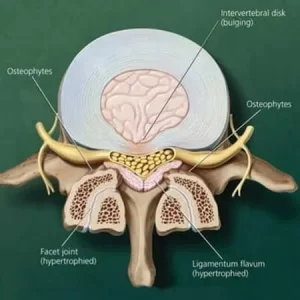
Hypertrophy: The actual cause of Ligamentum flavum hypertrophy is concerned with collagen type IV deposition, elastin fragmentation, and calcification of elastin and cartilage. Hypertrophy of ligamentum flavum is an age-related disorder in which there is a reduction in elastin-to-collagen ratios in ligamentum flavum. however many times present in elderly people, it can happen at any age.
The major cause is the neglect of minor injuries. Hypertrophy refers to the abnormal enlargement of the Ligamentum Flavum, which can compress the spinal cord and nerve roots. This may result in symptoms like lower back discomfort, numbness, and leg paralysis.
Degeneration: Degeneration of the Ligamentum Flavum can occur due to aging or wear and tear. This can cause the ligament to become weakened and less flexible, leading to instability in the spine.
Calcification: Calcification of the Ligamentum Flavum can occur due to the deposition of calcium salts in the ligament. This can cause the ligament to become stiff and inflexible, leading to compression of the spinal cord and nerve roots.
Ossification: Ossification of the Ligamentum Flavum refers to the formation of bone within the ligament. This can cause compression of the spinal cord and nerve roots, leading to symptoms such as back pain, numbness, and weakness in the legs.
Trauma: Trauma to the spine can cause injury to the Ligamentum Flavum, leading to instability and dysfunction in the spine.
In severe conditions, surgery may be necessary in order to remove or repair the damaged ligament.
Symptoms of the Ligamentum Flavum
The symptoms of the Ligamentum Flavum depend on the severity and location of the pathology.
There are some signs and symptoms present when ligamentum flavum hypertrophy is present in the neck.
The neck is the second very common site for ligamentum flavum overgrowth, but it is very dangerous.
A severely thickened or hypertrophied ligamentum flavum in the neck can cause severe spinal canal stenosis or myelopathy. Severe canal stenosis in the neck can result in severe symptoms because of myelopathy. Myelopathy is severe compression of the spinal cord that often happens from hypertrophy, congenital disabilities, trauma, or degeneration Symptoms of malfunction can be present from the neck downward to the feet. It can result in paralysis from the neck level downward.
However, some common symptoms include:
- Back pain: Pain in the lower back is a common symptom of Ligamentum Flavum pathology. The pain may be localized or radiate to the legs, hips, or buttocks.
- Numbness and tingling: Compression of the spinal cord and nerve roots can cause numbness and tingling in the legs, feet, and toes.
- Weakness: Weakness in the legs is a common symptom of Ligamentum Flavum pathology. The weakness may be mild or severe and can affect one or both legs.
- Loss of balance: Compression of the spinal cord can affect the ability to balance and coordinate movements.
- Bowel and bladder dysfunction: In severe cases, compression of the spinal cord can lead to bowel and bladder dysfunction.
- Radiculopathy: Compression of the nerve roots can cause radiculopathy, which is characterized by pain, numbness, and weakness in a specific area of the body.
- Spinal stenosis: Ligamentum Flavum hypertrophy, degeneration, calcification, or ossification can cause spinal stenosis, which is characterized by narrowing of the spinal canal. Compression of the spinal cord and nerve roots may arise from this.
It is very essential to take medical treatment if you feel any of these symptoms as they can indicate a serious underlying condition.
Diagnosis
The diagnosis of Ligamentum Flavum pathology typically involves a combination of medical history, physical examination, and imaging tests. The medical history will involve questions about the onset, duration, and severity of symptoms, as well as any relevant medical conditions or past surgeries.
During the physical examination, the doctor will assess the range of motion of the spine, muscle strength, reflexes, and sensation. They may also perform specific tests to evaluate for spinal cord or nerve root compression.
Imaging tests are typically ordered to confirm the diagnosis and determine the severity and location of the pathology. These may include:
- X-rays: X-rays can show bone abnormalities such as spinal stenosis, fractures, or degenerative changes.
- MRI (Magnetic Resonance Imaging): MRI uses powerful magnets and radio waves to produce detailed images of the soft tissues in the body, including the ligaments, discs, and nerves. It can show herniated discs, spinal cord compression, and ligamentum flavum hypertrophy or ossification.
- CT (Computed Tomography): CT scans use X-rays and computer technology to produce detailed images of the bones and soft tissues. It can show bone abnormalities such as spinal stenosis or fractures.
- Myelogram: A myelogram involves injecting a contrast dye into the spinal canal to make the spinal cord and nerve roots more visible on X-rays or CT scans.
Once a diagnosis is made, treatment options will depend on the severity and location of the pathology. Mild cases may be treated with rest, physical therapy, and pain medications. More severe cases may require some surgery to decompress the spinal cord or nerve roots.
Treatment of the Ligamentum Flavum Dysfunction
Conservative treatment
Conservative treatment for ligamentum flavum pathology involves non-surgical methods to manage the symptoms and slow down the progression of the condition. This approach is typically recommended for mild to moderate cases of ligamentum flavum hypertrophy or ossification.
- Rest: Resting the spine can help alleviate pain and reduce inflammation. Patients may be advised to avoid activities that aggravate the symptoms, such as heavy lifting or prolonged sitting.
- Physical therapy: Physical therapy can help improve flexibility, strength, and range of motion of the spine. The therapist may recommend exercises to strengthen the core muscles, improve posture, and reduce pressure on the spinal cord or nerve roots.
- Medications: Pain medications such as nonsteroidal anti-inflammatory drugs (NSAIDs) or muscle relaxants may be prescribed to manage pain and muscle spasms.
- Epidural steroid injections: Injections of corticosteroids into the epidural space can help in reducing inflammation and relieve pain. This treatment is typically reserved for patients with moderate to severe symptoms who do not respond to other treatments.
- Bracing: A back brace may be advisable for giving support and stability to the spine. This can help reduce pressure on the ligamentum flavum and alleviate pain.
Conservative treatment may not be effective for all patients with ligamentum flavum pathology, especially those with severe symptoms or progressive disease. In such cases, surgery may be necessary to decompress the spinal cord or nerve roots and prevent further damage. It is essential to discuss all treatment options with a healthcare provider to identify the best approach for each individual condition.
Physiotherapy treatment
Physiotherapy treatment for ligamentum flavum pathology involves a combination of exercises and manual therapy techniques to improve spinal mobility, reduce pain and inflammation, and strengthen the muscles supporting the spine. The physiotherapist will assess the patient’s condition and design a customized treatment plan based on their specific needs and goals.
Stretching exercises: The physiotherapist may recommend stretching exercises to improve flexibility and range of motion of the spine. These exercises can help reduce pressure on the ligamentum flavum and alleviate pain. Examples of stretching exercises include hamstring stretches, hip flexor stretches, and spinal extension exercises.

Strengthening exercises: Strengthening exercises can help in improving the stability and support of the spine. The physiotherapist may recommend exercises to strengthen the core muscles, including the abdominal and back muscles. Examples of strengthening exercises include planks, bridges, and back extensions.
Manual therapy: Manual therapy techniques such as massage, mobilization, and manipulation can help reduce pain and improve spinal mobility. The physiotherapist may use their hands or specialized tools to apply pressure to the affected area and release tension in the muscles and soft tissues.
Posture correction: Poor posture can contribute to the development of ligamentum flavum pathology. The physiotherapist may recommend exercises and techniques to improve posture, such as ergonomic adjustments, postural taping, and education on proper body mechanics.
Modalities: Modalities such as heat or cold therapy, ultrasound, or electrical stimulation may be used to reduce pain and inflammation in the affected area.
The duration and frequency of physiotherapy treatment for ligamentum flavum pathology will depend on the severity of the condition and the individual needs of the patient. In some cases, ongoing maintenance therapy may be necessary to prevent recurrence of symptoms. It is important for patients to follow their physiotherapist’s instructions and continue with their exercises and home care program to achieve the best possible outcome.
Risk factors
The ligamentum flavum is a strong and elastic ligament that connects the vertebrae of the spine. It is located in the spinal canal and helps to maintain the stability of the spine. However, certain risk factors can increase the likelihood of developing ligamentum flavum pathology, which can cause pain and other symptoms. Some of these risk factors include:
- Age: As people age, the ligamentum flavum can become thicker and more fibrous, which can lead to the narrowing of the spinal canal and compression of the spinal nerves.
- Genetics: Some people may have a genetic predisposition to developing ligamentum flavum pathology, which can make them more susceptible to the condition.
- Obesity: Excess weight can put additional pressure on the spine, which can cause wear and tear on the ligamentum flavum and increase the risk of developing pathology.
- Trauma: Injuries to the spine, such as whiplash or a fall, can damage the ligamentum flavum and lead to pathology.
- Repetitive stress: Repeated movements or activities that put stress on the spine, such as heavy lifting or bending, can cause wear and tear on the ligamentum flavum over time.
- Poor posture: Sitting or standing with poor posture can put additional strain on the ligamentum flavum and increase the risk of developing pathology.
- Spinal conditions: Certain spinal conditions, such as spinal stenosis or herniated discs, can cause compression of the ligamentum flavum and lead to pathology.
Understanding these risk factors can help individuals take steps in order to reduce their risk of developing ligamentum flavum pathology. Maintaining a healthy weight, practicing good posture, avoiding repetitive stress on the spine, and seeking prompt treatment for spinal injuries or conditions can all help to protect the ligamentum flavum and maintain spinal health.
How to prevent injuries of the Ligamentum Flavum?
Preventing injuries to the ligamentum flavum involves taking steps to reduce the risk factors that can contribute to its pathology. Here are some tips for preventing injuries to the ligamentum flavum:
- Maintain a healthy weight: Excess weight puts additional pressure on the spine, which can cause wear and tear on the ligamentum flavum. Maintaining a healthy weight through diet and exercise can help to reduce this pressure and protect the ligamentum flavum.
- Practice good posture: Sitting or standing with good posture can help to reduce strain on the ligamentum flavum and other structures of the spine. This means keeping the shoulders back, chest out, and chin up while sitting or standing.
- Avoid repetitive stress on the spine: Repeated movements or activities that put stress on the spine, such as heavy lifting or bending, can cause wear and tear on the ligamentum flavum over time. Avoiding these activities or taking breaks to stretch and move can help to protect the ligamentum flavum.
- Wear appropriate footwear: Wearing shoes with good support and cushioning can help to reduce the impact on the spine and protect the ligamentum flavum.
- Seek prompt treatment for spinal injuries or conditions: Injuries to the spine, such as whiplash or a fall, can damage the ligamentum flavum and lead to pathology. Seeking prompt treatment for these injuries can help to prevent further damage and protect the ligamentum flavum. Additionally, treating spinal conditions such as spinal stenosis or herniated discs can help to reduce compression on the ligamentum flavum and prevent pathology.
By following these tips, individuals can help protect their ligamentum flavum and maintain spinal health.
FAQ
The ligamentum flavum is a strong, elastic ligament that connects the vertebrae in the spine.
The ligamentum flavum helps to support the spine and maintain its stability. It also helps to protect the spinal cord by preventing excessive movement of the vertebrae.
The ligamentum flavum is located in the spinal column, between the laminae of adjacent vertebrae.
Ligamentum flavum hypertrophy can be caused by aging, degenerative changes in the spine, or repetitive stress on the ligament.
Symptoms of ligamentum flavum hypertrophy may include back pain, stiffness, and limited mobility. In severe cases, it can cause compression of the spinal cord or nerve roots, leading to symptoms such as numbness, tingling, weakness, and difficulty walking.
Diagnosis of ligamentum flavum hypertrophy typically involves imaging tests such as X-rays, CT scans, or MRI scans.
Treatment for ligamentum flavum hypertrophy may include physical therapy, pain management, and in severe cases, surgery to remove a portion of the ligament to relieve pressure on the spinal cord or nerve roots.
There is no guaranteed way to prevent ligamentum flavum hypertrophy, but maintaining good posture, practicing proper lifting techniques, and engaging in regular exercise can help reduce the risk of developing spinal problems.
The ligamentum flavum causes limits spinal flexion (bending forward), especially unaware flexion. This function makes sure the ligamentum flavum protects your discs from injury.
Ossification of ligamentum flavum, which is a major cause of thoracic stenosis in the Japanese population, is uncommon in Caucasians. Numbness of the leg, followed by paraparesis, and leg pain are the very common starting symptoms, while a minority of patients have trunkal pain as an initial symptom.

